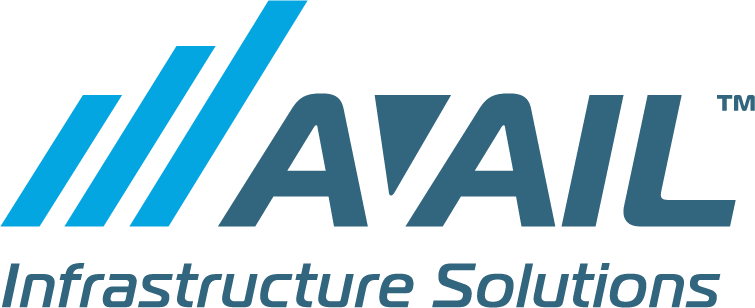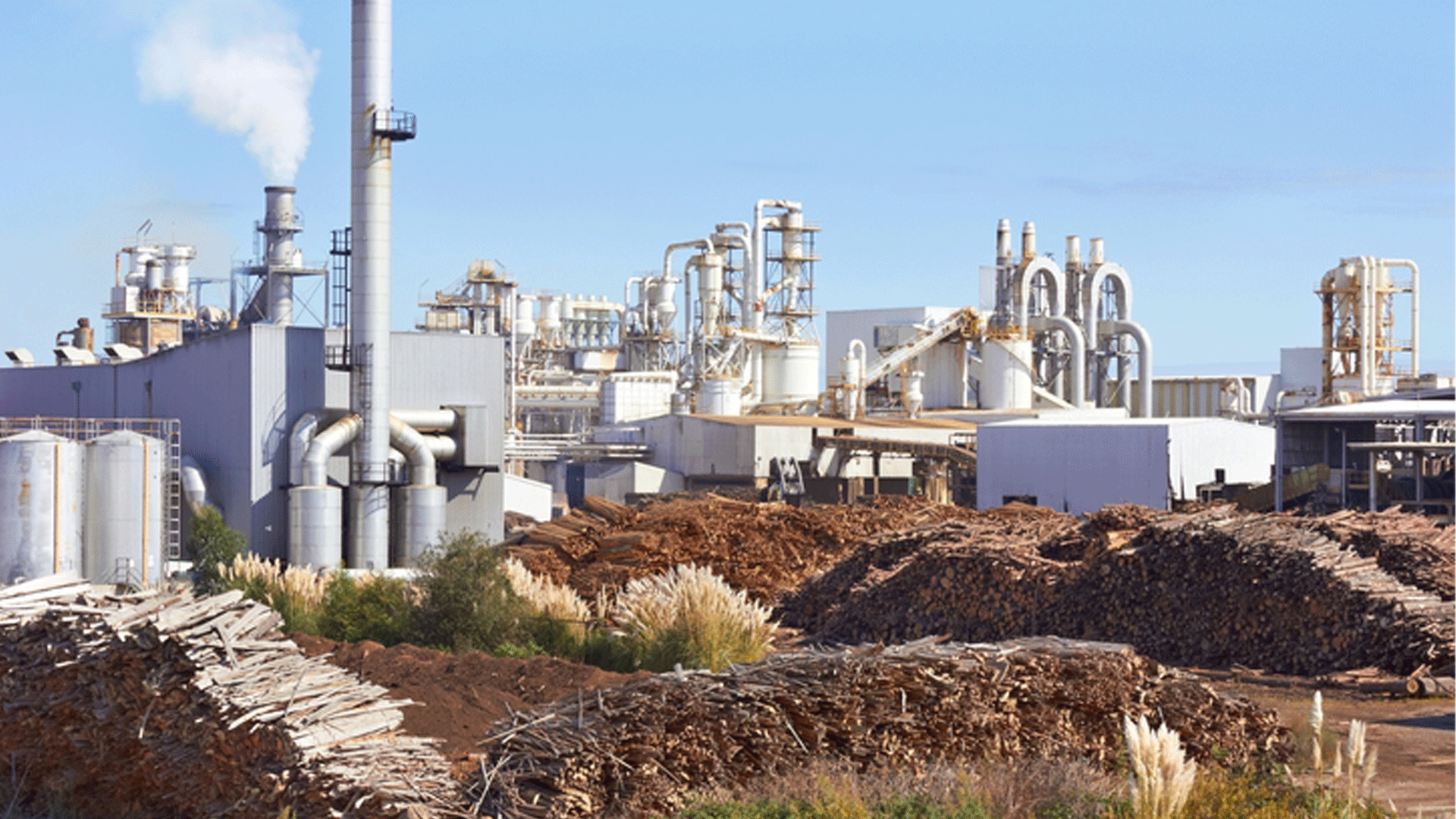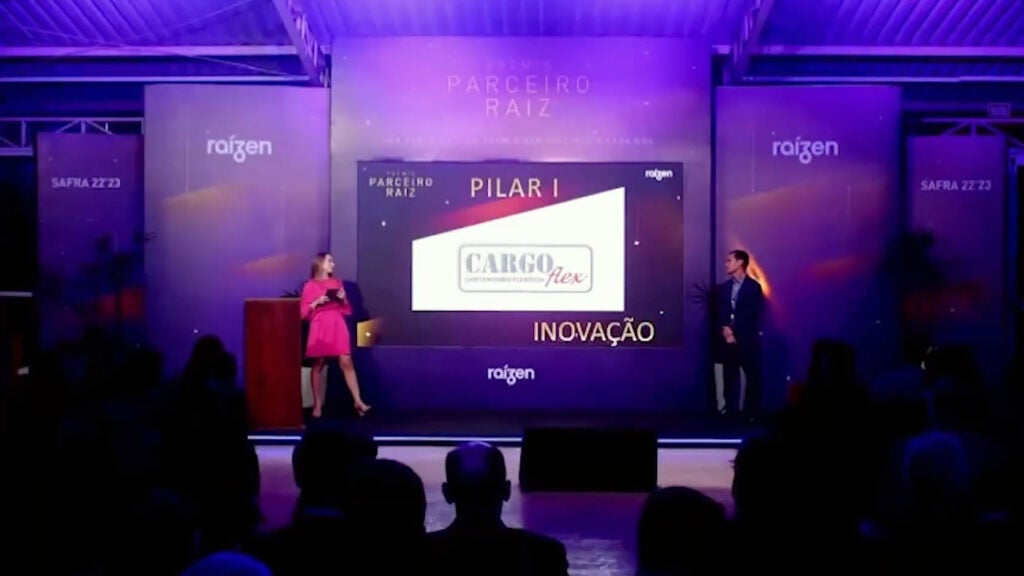Black Liquor Recovery Boilers
The kraft pulping process was patented in 1884 and is the most common form of chemical pulping, at 80% of the total chemical pulping industry.[1] The economic viability of the entire process would not be possible without the black liquor recovery boiler (BLRB) used to reclaim the spent pulping chemicals discharged from digesters through a series of evaporators to increase their concentrations. The combustion gases are highly corrosive, particularly at temperatures necessary for operation above 900 psi. Resembling a large industrial boiler, the furnace is constructed with waterwall tubes in the furnace floor as well as on the sidewall. Black liquor is the waste liquor from the kraft pulping process and contains most of the original cooking inorganic elements and the degraded, dissolved wood substance.[3] The black liquor is a thick, viscous material with high hydrocarbon content that has traditionally been burned in a recovery boiler to generate heat and electricity to power the pulp mill. Organic compounds are burned to generate heat for producing steam for various processing applications within the mill. The resulting heat is a highly valued energy stream, producing power and heat for the pulp and paper mills, making many of them self-sufficient in energy. Combustion takes place under reducing conditions, transforming sodium sulfate to sodium sulfide and also forming sodium carbonate. Inorganic solids, such as sodium sulfide, sodium hydroxide, sodium carbonate, sodium sulfate, thiosulfate, sodium chloride and others, are melted in the furnace bed.
BLRB Furnace Sections Challenges
Burning the black liquor takes place in the furnace and requires oxygen to be mixed to self-sustain combustion. The furnace can be broken into two areas based on their functions, the lower furnace and upper furnace. In the lower portion of the furnace, the black liquor is sprayed in to intermix with combustion air and where the char bed accumulates and smelt is formed later draining out of this section. The molten smelt is removed from the furnace through water cooled spouts and a series of floor tubes that require corrosion mitigation and a prone to various cracking mechanisms. In the upper portion of the furnace, considered to be above the smelt bed, combustion completes as waterwall panels cool gases. In this area, corrosion is primarily due to sulfidation. Gas then flows out of the upper furnace through a screen section, superheater, generating bank, and economizer in most cases. In these various tube banks, the components are being subjected to high temperature erosion-corrosion.
BLRB Furnace Protection
Historically various methods of protecting the tubes were explored with limited success including pad welding with a stainless steel alloy, thermal sprayed coatings and others. Excessive dilution with manual pad welding generally resulted in 15 or 20% iron content in the alloy applied therefore significantly reducing the alloy’s resistance to high temperature erosion-corrosion. Thermal spray experienced spalling in some cases and in others sulfidation attack occurred to the carbon steel tubes under the coatings. WSI began researching alloying materials and innovative application methods to achieve longer life in the lower and upper furnace components exposed to the various forms of erosion & corrosion. Three application methods have been successfully installed meeting those challenges.
Field Applied Unifuse™ Weld Metal Overlay
Utilizing custom built and proprietary weld technology, the machine applied GMAW Unifuse™ weld metal overlay had the ability to substantially extend the service life of recovery boiler waterwalls. Applying custom programmed weld deposit sequences from the membrane to the tube crowns, the field applied machine Unifuse™ ensured industry best weld deposit chemistry, accurate thickness deposition across the entire tube, and productivity unachievable prior to the technology. Utilizing 309ss to mitigate sulfidation attacks, BLRB operators have experienced longer life to waterwall panels. In addition, alloy 625, known to be highly resistant to environmentally assisted cracking and to thermal fatigue cracking, is an excellent candidate for Unifuse™ overlay for floor tube applications and water-cooled smelt spouts.
Shop Applied Unifuse™ Panels for Fabrication
From time to time operators faced situations when high temperature corrosion and erosion & corrosion mechanisms accelerated waterwall wastage unpredictably and past ASME code allowable thicknesses. Operators facing larger areas of this condition needed panel replacement parts with alloying protection available for installation. WSI leveraged their field application experiences to develop processes and procedures for shop applied Unifuse™ weld metal overlay. The shop application meets ASME code and is delivered under WSI’s quality program.
Shop Applied Unifuse™ 360° Tubes for Fabrication
To extend the life of upper furnace components, such as screen sections, superheaters, generating banks, and economizers, and increase fabrication options for waterwalls, Unifuse™ technology was patented by WSI resulting in a process for the fabrication of bimetallic tubes using a full fusion automated welded process. The patented process uses an initial uniform 360° GMAW weld deposit of alloying material followed by GTAW to smooth the overlay surface and temper the heat-affected-zone (HAZ) formed in the substrate steel during GMAW process. The completed Unifuse™ 360° tubes exhibit excellent ductility and toughness in the as-overlaid condition which allows fabricators to execute bends necessary to achieve various configurations without cracking.
WSI – Proven Results. Automatically.
With over 2000 total workscopes executed globally with Unifuse™ for furnaces since 2000, WSI is the world leader in boiler life extension. Whether the boiler needs to be repaired emergently or during a planned outage, WSI has unparalleled innovative leadership backed by proven results. WSI has the most extensive portfolio of successfully completed, BLRB weld projects and qualified procedures to handle any recovery boiler specific challenges. Find out more about our engineered services offering at WSI.
[1] Nicholas P. Cheremisinoff, Paul E. Rosenfeld, in Handbook of Pollution Prevention and Cleaner Production, 2010
[2] The National Board of Boiler and Pressure Vessel inspectors. Black Liquor Recovery Boilers
[3] Pratima Bajpai, Biermann’s Handbook of Pulp and Paper (Third Edition), 2018



